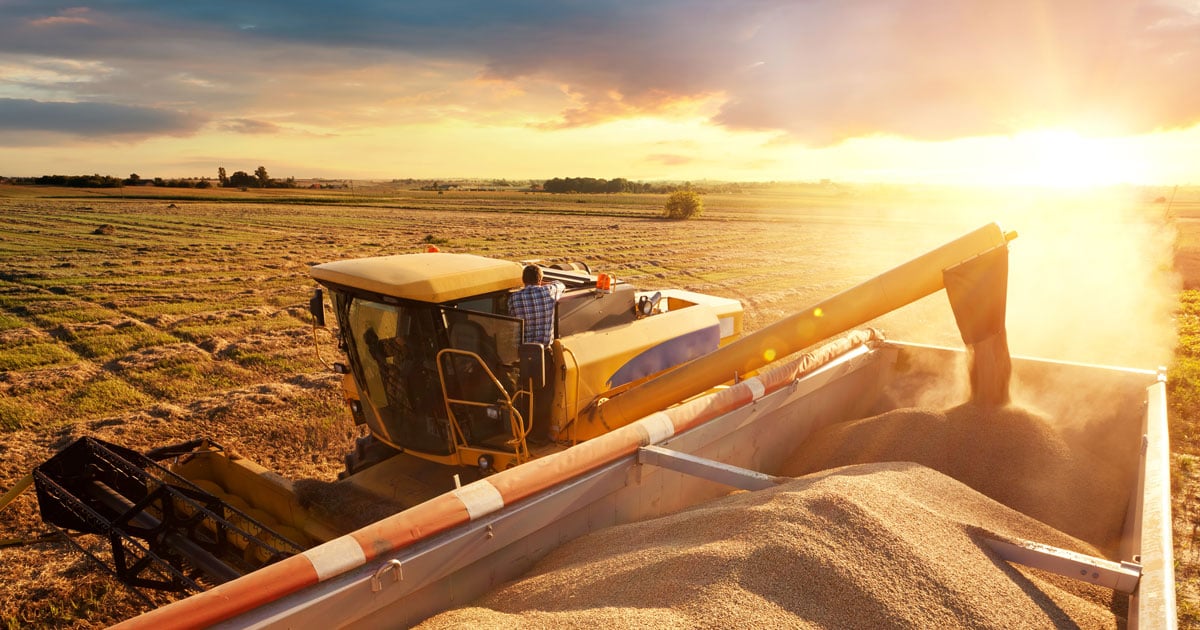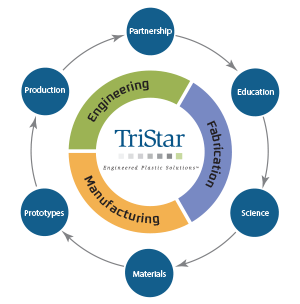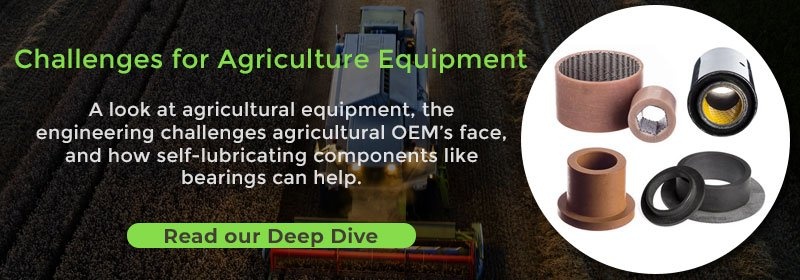
The agriculture industry includes everything from small local farmers growing organic produce to massive grain and livestock operations producing food for the export market.
These core production activities are supported by a huge network of equipment manufacturers. From simple plows to sophisticated harvesting combines, equipment plays an essential role in helping agriculture produce food as efficiently as possible.
This blog post provides a concise overview of this essential industry that provides nutrition for the entire globe. For a more focused look at engineering challenges for agricultural equipment (and how TriStar components can help tackle them), please see our article here.
What is agriculture?
Formally defined, agriculture is the science and business of cultivating plants and animals for use as food (and in some cases, other industrial products like fiber, eg. cotton).
Harnessing the productive power of nature requires extensive knowledge of many different processes. Soil must be tilled, fertilized, and irrigated. Soil qualities must be carefully matched to the right crops. Seeds must be planted at the right time. Plants must be protected from pests and weeds. And these are just a few of the concerns that farmers face each and every year.
Agriculture has developed over thousands of years, and vital knowledge has been accumulated over that entire span. We directly benefit from this long process of advancement today. Today’s plants and animals, for example, reflect hundreds of generations’ work breeding, husbanding, and hybridizing different species so that they can better serve human needs.
Farmers and other agriculture specialists remain engaged in a never-ending quest to increase yields using limited arable lands. These efforts can be a matter of life and death: the “Green Revolution” famously enabled dramatic increases in food production just when it appeared certain that the developing world was set to descend into chronic famine.
This work to increase production can center on:
- Expanding Irrigation: California’s Central Valley, for instance, produces 40% of the United States’ fruits, nuts, and vegetables using less than 1% of US farmland. Before irrigation, it was a desert speckled with seasonal wetlands. From the very first sedentary agricultural societies in Egypt, the Fertile Crescent, and the river valleys of China, irrigation has been an essential driver of more food production.
- Engineering New Arable Land: a famous example is the Netherlands, which has used ingenious engineering and hard work to transform the ocean itself into arable farmland. To increase production, the only alternative to increasing yields per acre is actually creating new farmland.
- Making Use of New Equipment and Technology: new equipment has always played a key role in expanding agricultural efficiency. Innovations that may seem obvious today (like the heavy metal plow) precipitated agricultural revolutions in their own time. Mechanized agriculture, often dated by the creation of the seed drill by Jethro Tull, revolutionized the industry in its own right. Equipment innovations continue to this day, with GPS, IoT sensors, and even UAVs becoming increasingly commonplace on farms.
Finally, genetics has been a new frontier over the past several decades, representing a marked leap in directly increasing the biological productivity of plants and animals.
How Big is the Agriculture Industry? Facts and Figures
In the United States, farming directly contributes over $130 billion to the economy, about 1% of GDP. However, its true impact is much larger: related industries like food processing depend on agriculture for their inputs. Expanding to agriculture, food, and related industries, the overall impact rises to $1.053 trillion (around 5% of GDP).
This economic activity amounts to well over 20 million full-and part-time jobs, or 11% of total US employment. Of these jobs, over 2.5 million are directly on the farm.
In developing countries, agriculture plays an even more dominant role in the economy. While it accounts for 4% of global GDP, it is well over 25% in many developing countries (according to the World Bank).
As more and more global farms adopt mechanized techniques, the associated market for agricultural equipment is only expected to grow. The equipment market is over $150 billion and is expected to reach $244.2 billion by 2025.
Learning More
For a look at recent trends in agriculture, please see our blog post here. Next, we provide an overview of key events in the historical development of agricultural equipment here.
At TriStar, we work with this equipment up close. We have worked with a broad variety of agricultural equipment OEM’s to help solve key engineering challenges for everything from tractor under-carriages to liquid sprayers (for fertilizer, pesticide, etc.)
Our bearings and other components fabricated from advanced self-lubricating materials can offer greaseless operation for lower maintenance costs, less equipment downtime, and the functional characteristics needed to replace traditional metal bearings in a wide variety of applications.
We employ a true consultative engineering approach to help our customers select components that can generate real ROI for agriculture equipment. Critical components work best when they are engineered to reflect relevant operational challenges (not treated as commodities to be sourced from the cheapest bidder).
If you prefer to reach out directly to the TriStar team to discuss your agriculture product and its component needs, you can contact our bearings experts using the button below.










